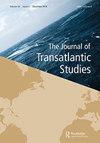Between Empires: Spanish Immigrants in the United States (1868–1945)
Q1 Arts and Humanities
引用次数: 0
Abstract
In the late nineteenth and early twentieth centuries, tens of thousands of Spanish peasants, seamen, and workers emigrated to the United States, and settled in an archipelago of tight-knit enclaves that dotted the entire country from Barre, Vermont to Monterey, California, and from Boise, Idaho, to Tampa, Florida. Neither friars nor conquistadors, those tens of thousands of immigrants from Spain who ended up in the United States represent just a tiny percentage of the millions of Spaniards who, in those same years, crossed the Atlantic, most with the goal of settling in various points of the Spanish-speaking Americas. Herein lies one of the best-kept demographic secrets of the American hemisphere: the massive presence of Spaniards in the Americas –South, Central and North– is largely a post-imperial phenomenon. For every Spanish friar or explorer from Spain’s Age of Empire who is commemorated by a statue or a street name in the United States, there would arrive, during the Age of Immigration, thousands of Spanish seamen, nannies, cigar-makers, canners, miners, shopkeepers, sheepherders and steelworkers. But because their stories do not easily fit into any conventional national narrative in either country, these working-class Spaniards are, for the most part, absent from standard historical accounts of both Spanish emigration and US immigration. They are, as it were, invisible immigrants.帝国之间:美国的西班牙移民(1868-1945)
在19世纪末和20世纪初,成千上万的西班牙农民、海员和工人移民到美国,并在从佛蒙特州的巴雷到加利福尼亚州的蒙特利,从爱达荷州的博伊西到佛罗里达州的坦帕,遍布整个国家的紧密联系的飞地群岛中定居下来。那些从西班牙来到美国的成千上万的移民,既不是修士,也不是征服者,只占当年跨越大西洋的数百万西班牙人的一小部分,大多数人的目标是在讲西班牙语的美洲的各个地方定居。这里隐藏着美洲半球最保守的人口秘密之一:西班牙人在美洲南部、中部和北部的大量存在,在很大程度上是一种后帝国时代的现象。在美国,每有一个西班牙帝国时代的修士或探险家被雕像或街道名纪念,就会有成千上万的西班牙海员、保姆、雪茄制造商、罐头工人、矿工、店主、牧羊人和钢铁工人来到美国。但由于他们的故事不容易融入这两个国家的任何传统民族叙事,这些西班牙工人阶级在西班牙移民和美国移民的标准历史记载中,大多是缺席的。可以说,他们是隐形移民。
本文章由计算机程序翻译,如有差异,请以英文原文为准。
求助全文
约1分钟内获得全文
求助全文
来源期刊

Journal of Transatlantic Studies
Arts and Humanities-History
CiteScore
0.90
自引率
0.00%
发文量
15
期刊介绍:
The Journal of Transatlantic Studies is the official journal of the Transatlantic Studies Association. It began publication in 2003. The focus is on the transatlantic region broadly defined to include the Americas and the Caribbean in the west and Europe extending to Russia the Middle East and Africa in the east.The Journal explores and provides multi-disciplinary analysis of this vital region of the world through engagement principally with: - History - Literature - IR and Security Studies - International Law and Organisation - Culture and Race - Slavery and Migration - Film - Economics and Business Studies - Planning and the Environment It is published quarterly and accepts proposals for themed issues as well as individual articles between 5-12,000 words in length. It also has a short book review section. Two peer reviewers evaluate all submissions and any manuscript that divides opinion is then submitted to a third peer reviewer for a final decision. The JTS aims to provide decisions on submissions within 12 weeks.
 求助内容:
求助内容: 应助结果提醒方式:
应助结果提醒方式:


